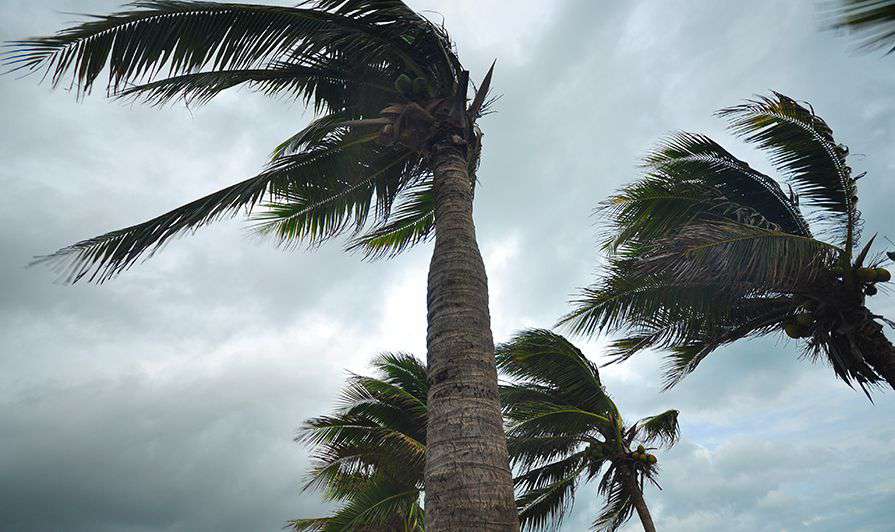Is Your Oil Site Really Ready For Hurricanes And Flooding?

Hurricanes can be unpredictable in the path they follow and the kind of devastation they cause.
While a recent report cites less intensity for hurricanes in 2018 compared to 2017, we could still see 10 to 16 named storms with one to four major hurricanes in Categories three or higher, making it an average to above average season overall. These reports are constantly changing as the weather shifts, making it difficult to predict the definite number of hurricanes we could see this year. The wind speeds of hurricanes can reach over 100 mph, which can cause devastating damage to oil and gas sites, as well as surrounding areas.
Hurricanes were also observed to have decreased in speed, which results in greater rainfall totals and increased chances of freshwater flooding. This was a large portion of the devastation caused by Hurricane Harvey in 2017 where the cost of damages reached $125 billion.
Even with the hope that the hurricane season proves to be slightly milder than last year’s, the expansive oil and gas industry based in Texas and other sites closer to the East Coast need to ensure that their oil spill prevention and hurricane readiness measures are in place.
Five steps to protect your oil site from hurricanes and flooding

Containing flowback, the chemical-laced liquid injected into a well site, is more difficult during a hurricane. Flooding can carry oil, chemicals, and other environmental determinants away from the oil and gas sites toward the surrounding areas, where it can come in contact with human and animal life in the vicinity.
1. Closed-loop tank-based flowback control – It isn’t just human health that can be affected by oil spills and flowback contamination. Animal and plant life run the risk of being damaged; these spills can reduce animal reproduction, destroy habitats and even cause an unnatural increase in predation. A closed-loop system is great for containing flowback and ensuring that it doesn’t escape into the environment. This involves the deployment of fracking tanks that the flowback is directed into straight from the well, ensuring that it stays contained and doesn’t come into any contact with the outside environment.
2. On and off-site treatment – Using tanks to transport flowback, for treatment off-site, or conducting the treatment on the site itself can ensure that contaminants are quickly removed from the wastewater created due to flowback, thus lessening the chances of spillage and contamination. This combined with a closed-loop system will help ensure that the environment and its inhabitants nearby are protected from any potential spills that could negatively affect their lives.
3. Tanks and containers for oil storage – Oil spill contamination is dangerous and can cause long-term health issues to those exposed to it. The air carries vapors and contaminants released by the spilled oil. Oil can get into drinking water, or come into direct contact with local residents in the vicinity of the spill. Indirect contamination can also happen through food and soil. Robust tanks and containers used for oil storage can ensure that no spillage occurs due to damage caused by hurricanes, and no breach occurs from flooding either. Oil and gas companies must ensure that their primary containment structures are, by design, capable of withstanding natural disasters.
4. Secondary containment – An important aspect about spilling and containment is having a backup plan, which in this case is secondary containment. Building pits, run-off slopes, berms, and trenches are secondary containment methods that have been proven to be effective and work towards more sufficient containment. Even if spills occur, it is contained on-site and doesn’t spread outside, which helps to limit the damage that could be caused.
5. Equipment lock-up – Oil and gas drilling as well as fracking equipment can cause expensive damage if they are tossed about in a hurricane, or are carried off in a major flood. Designate a secure location to quickly store equipment to minimize the risk of potentially causing damage to the equipment itself or to other structures on your site.
The EPA has put Oil Spills Prevention and Preparedness Regulations in place to ensure that there is a protocol followed in case of these situations. This includes the Overview of the Spill Prevention, Control, and Countermeasure (SPCC) Regulation that oil and gas sites must adhere to. The EPA enforces strict penalties for environmental pollution which includes heavy fines for the oil and gas site operators, especially if it is discovered that the appropriate prevention measures were not in place before the spill.
Our dedicated oil and gas storage tank solutions are ideal for sites that require spill prevention. We also have experience in deploying disaster relief and liquid containment to hurricane-affected areas. Contact us today to learn more.